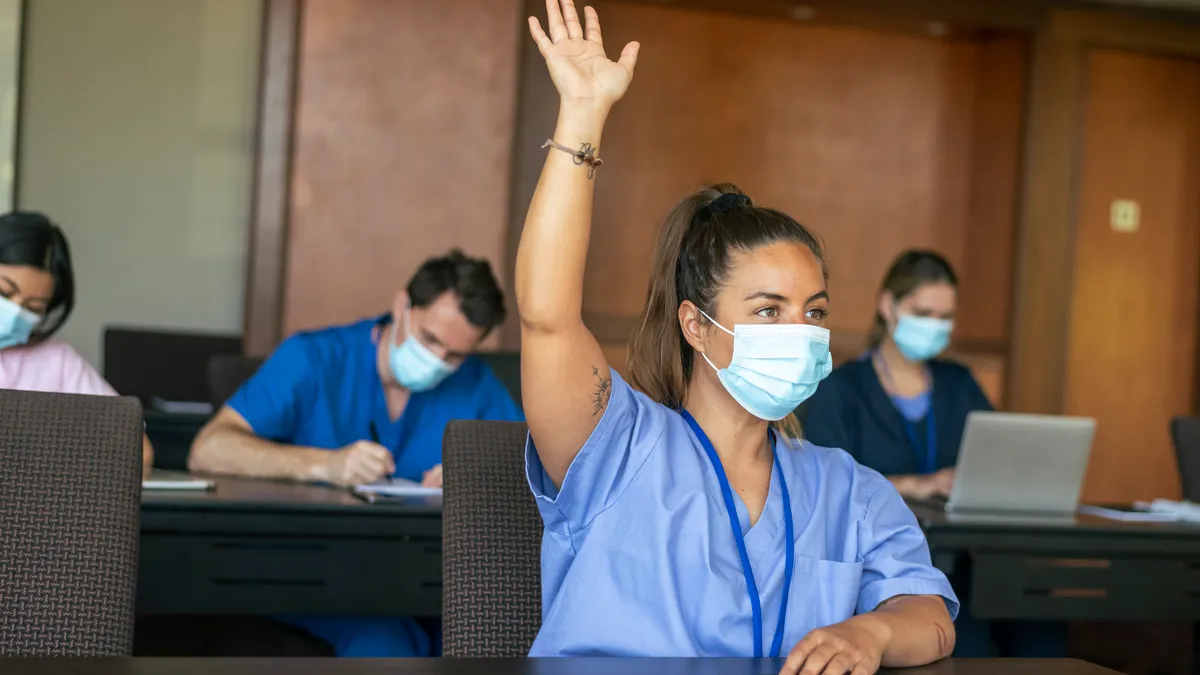Dive Brief:
- Students from high-income households are overrepresented in medical schools, regardless of their race and ethnicity, according to a new study from University of Minnesota researchers.
- Just 1.7% of Black households are in the top 5% of earners in the U.S., but 9.1% of Black medical students fall into that category. Similarly, 14.7% of Hispanic medical students come from the top 5% earning homes, even though only 2.2% of Hispanic households are in that group.
- Medical schools can work to balance these disparities by considering family income in the application process, according to the research, published in the peer-reviewed journal JAMA Network Open.
Dive Insight:
The medical education field has made some gains in diversity over the last few decades, with large increases coming from women and Asian Americans, according to research in The New England Journal of Medicine. Many institutions are actively working to increase enrollment where disparities remain, including in Black and Hispanic populations.
But financial diversity in medical schools has largely gone unresearched, in part because it's a less-visible subset of diversity than race and gender, according to Arman Shahriar, the new study's lead author and a medical student at U of Minnesota.
While certain racial and ethnic groups are still underrepresented in medical schools — particularly Black and Hispanic students — high-income students from each group are overrepresented compared to the general population, he said.
The research compared medical student survey data from the Association of American Medical Colleges to census data. It represents 46.4% of conventional medical students.
Medical schools need to take applicants' socioeconomic backgrounds into account to make fair comparisons, said Shahriar.
"Assessing for socioeconomic disadvantage in the admissions process is critical," he said. "You're comparing students who had private tutoring and a ton of time for studying against students who might be working during undergrad and studying for the MCAT out of books that are three or four years old."
He recommends admissions departments use a standardized metric to assess socioeconomic status when making decisions. One example is using admissions methods that consider the occupations and level of education attainment of applicants' parents.
Results can vary if a medical school asks prospective students to self report household financial standings without being specific, according to Shahriar. Just over half of people making $100,000 a year or more identify as middle class, according to a 2015 survey from the Pew Research Center. But half of all households made less than $67,521 in 2020, the U.S. Census Bureau found.
"People from different income backgrounds are going to perceive the question differently," he said. "I think using parental education and occupation is a good indicator for that reason."
Having medical professionals from diverse backgrounds benefits patients and the field as a whole, said Shahriar.
"Generally, patients like to be seen by doctors who share some form of lived experience with them," he said. "Patients also tend to do better when they're seen by physicians who share some form of identity with them."
Having a more diverse workforce could also result in more inclusive and diverse research agendas, Shahriar said.











